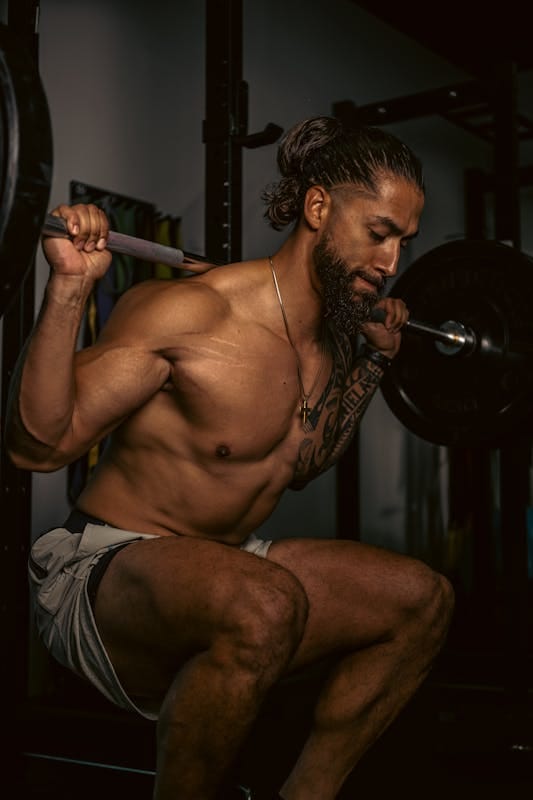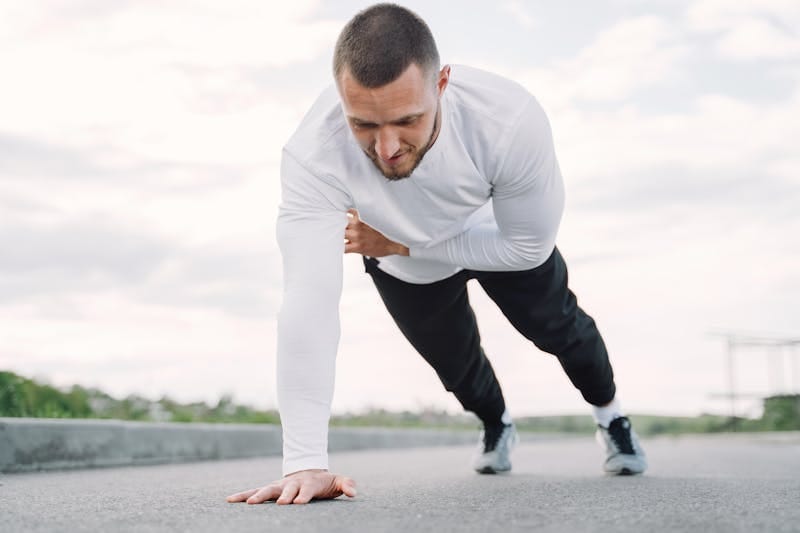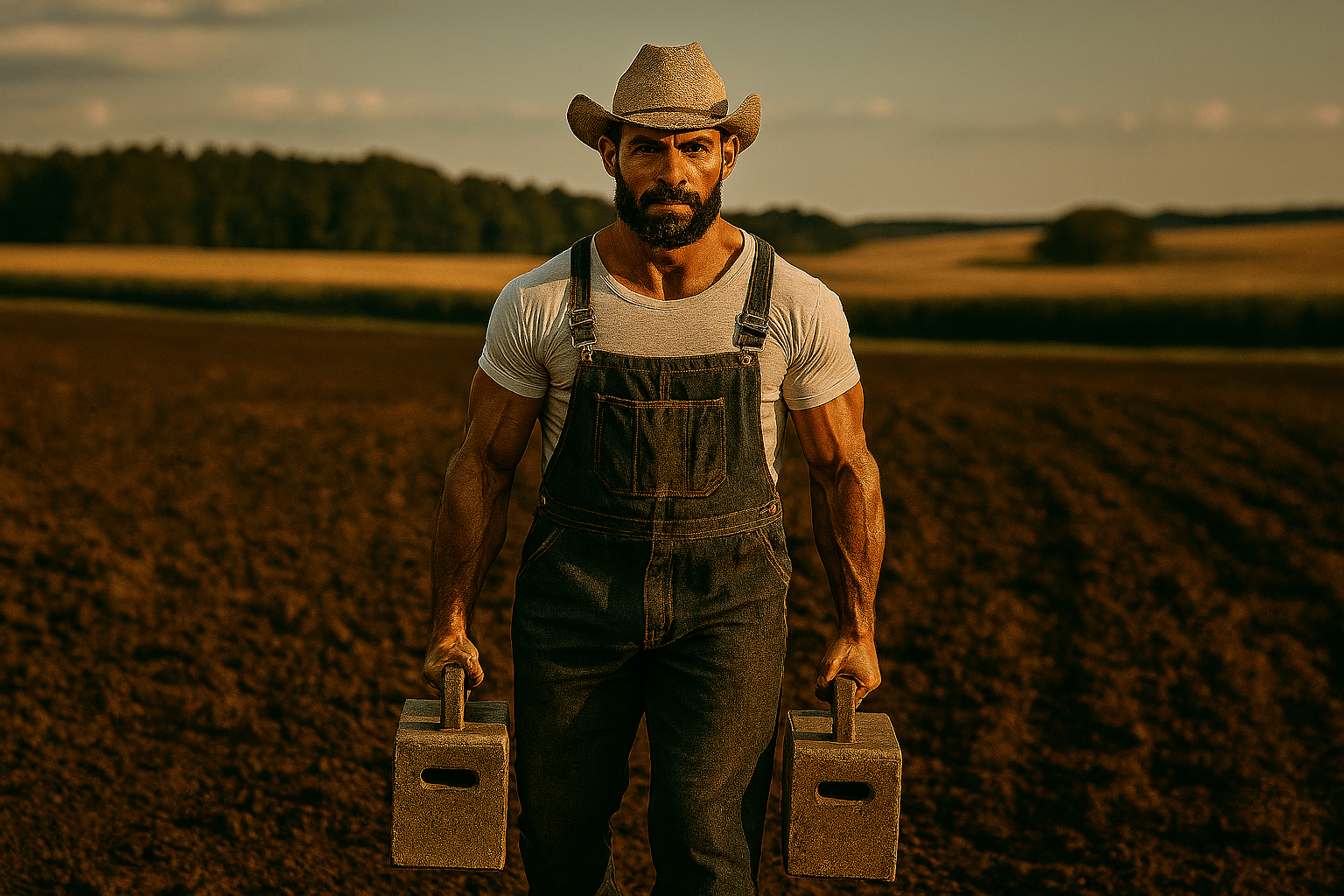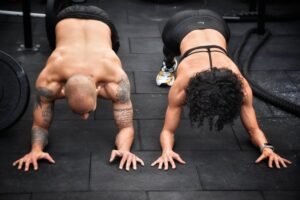Last Updated on October 6, 2025 by shawnshealth
Discover 7 powerful functional strength training exercises for beginners that build muscle, improve mobility, and enhance real-world strength. Start training smarter today!
What Is Functional Strength Training?
Want to build strength that actually helps you move better, lift smarter, and stay injury-free? Functional strength training targets real-world movement—using weights, bodyweight, or both—to improve balance, mobility, and total-body control.
🧠 Want to build rugged, real-world strength from the ground up? Start with Unlock Farmer Strength—your blueprint for grip, grit, and total-body power.
Key benefits:
- Improves strength, balance, and mobility.
- Uses multi-joint, full-body exercises.
- Mimics real-world actions like lifting and squatting.
- Builds practical strength.
- Reduces injury risk and enhances efficiency.
👉 Functional training strengthens your body for both workouts and real-life movement.
▶️ In this video, you’ll learn how functional strength training improves real-world movement—from lifting and carrying to bending and stabilizing.
🛠️ Need gear to support your strength journey? I’ve curated Amazon pages featuring top-rated fitness tools that align with the exercises in this guide—simple, effective, and beginner-friendly.
As an Amazon Associate, I earn from qualifying purchases—at no extra cost to you.
Table of Contents
Always consult your doctor before starting any new exercise program. The author is not responsible for injuries or health issues arising from the use of this information.
As an Amazon Associate, I earn from qualifying purchases. This means I may receive a commission if you purchase through links on this site, at no extra cost to you.
The Importance of Leaving 1-2 Reps in the Tank
For beginners, it’s crucial not to go to failure on every set. While pushing to the limit may seem effective, consistently leaving 1-2 reps “in the tank” leads to better results over time.
Why?
- Better Form: Stopping before failure helps maintain proper technique, reducing injury risk.
- Faster Recovery: Avoiding complete fatigue allows quicker muscle recovery, enabling more frequent workouts.
- Steady Progress: Training shy of failure prevents overtraining and helps maintain consistent strength gains.
- Mental Focus: It encourages quality reps over just pushing numbers, which is essential for functional strength in real-world movements.
Incorporating this approach into your training ensures long-term progress without burning out.
📚 Live Science explains functional training — what it is, how it works, and why it builds strength that actually translates to real life.

7 Beginner-Friendly Functional Strength Exercises
Observe that these sets and rep schemes are all only suggestions. Feel it out. You decide what works for you and then adjust accordingly.
1. Bodyweight Squats (Leg Strength + Mobility)
- Improves lower body strength and balance.
- How to do it: Stand with feet shoulder-width apart, lower into a squat, and push back up.
- Reps: 3 sets of 12-15
2. Push-Ups (Upper Body + Core Stability)
- Builds chest, shoulders, and triceps while activating the core.
- Beginner Tip: Start with incline push-ups (hands on a raised surface) before progressing to full push-ups.
- Reps: 3 sets of 8-12
3. Farmer’s Carry (Grip Strength + Endurance)
- Enhances grip strength and core stability.
- How to do it: Carry a pair of dumbbells at your sides and walk for 30-45 seconds.
- Reps: 3 sets of 30 sec walks
4. Step-Ups (Leg Power + Coordination)
- Mimics stair climbing and improves balance.
- How to do it: Step onto a sturdy surface, drive through the heel, and stand tall before stepping down.
- Reps: 3 sets of 10 per leg
5. Plank Shoulder Taps (Core + Shoulder Stability)
- Strengthens the core and improves shoulder stability.
- How to do it: In a plank position, tap each shoulder while keeping hips stable.
- Reps: 3 sets of 20 taps (10 each side)
6. Dead Hangs (Grip Strength + Shoulder Mobility)
- Helps improve grip strength and decompresses the spine.
- How to do it: Hang from a bar for 20-30 seconds.
- Reps: 3 sets of 20 sec hangs
7. Kettlebell Deadlifts (Total Body Strength)
- Teaches proper lifting mechanics while working the entire body.
- How to do it: Hinge at the hips, keep a straight back, and lift a kettlebell to standing.
- Reps: 3 sets of 10-12
🧠 Want to build overall strength with just your body? Learn how to train smarter with Functional Strength Through Calisthenics—a guide to bodyweight movements that build real-world power without machines.

Common Beginner Mistakes & How to Fix Them
✅ Mistake: Rushing Through Reps → Solution: Focus on controlled movement.
✅ Mistake: Skipping Warm-Ups → Solution: Use an easier version of the exercise you’re about to do.
✅ Mistake: Ignoring Core Engagement → Solution: Keep your core tight to protect your lower back.
4-Week Functional Strength Plan for Beginners
| Day | Exercises | Sets x Reps |
|---|---|---|
| Day 1: Lower Body & Core | Squats, Step-Ups, Plank Shoulder Taps | 3 x 12-15 |
| Day 2: Upper Body & Grip | Push-Ups, Dead Hangs, Farmer’s Carry | 3 x 30 sec (for hangs & carries) |
| Day 3: Full-Body Strength | Kettlebell Deadlifts, Squats, Push-Ups | 3 x 10-12 |
| Day 4: Active Recovery | Walking, Stretching, Yoga | 20-30 min |
👉 Try this for 4 – 12 weeks (I would lean more towards 12)!
🧠 People Also Ask: Functional Strength Training FAQs
❓ What is functional strength training?
Functional strength training focuses on exercises that improve your ability to perform everyday movements—like lifting, squatting, reaching, and carrying. It builds strength, mobility, and coordination using multi-joint, full-body movements.
❓ Is functional strength training good for beginners?
Yes. Functional training is ideal for beginners because it uses simple, scalable movements that mimic real-life actions. You can start with bodyweight exercises and progress gradually with added resistance.
❓ Can functional strength training build muscle?
Absolutely. While it emphasizes movement quality and control, functional training still builds muscle—especially in stabilizing muscles often missed by traditional weightlifting.
❓ How often should I do functional strength workouts?
Most beginners benefit from 3–4 sessions per week. This allows time for recovery while building consistency. You can rotate between upper body, lower body, and full-body days.
❓ What equipment do I need for functional strength training?
You can start with no equipment at all. As you progress, tools like dumbbells, kettlebells, resistance bands, and sandbags can add variety and challenge. A chin-up bar and weight bench are also helpful.
❓ What’s the difference between functional strength and traditional weightlifting?
Traditional weightlifting often isolates muscles for size and strength. Functional strength training focuses on movement patterns—training your body to work as a unit for real-world tasks like lifting, twisting, and stabilizing.
❓ Can I do functional training at home?
Yes. Many functional exercises—like squats, push-ups, planks, and step-ups—require minimal space and no equipment. You can build a full routine using just your bodyweight.
❓ What are the best functional strength exercises for beginners?
Some of the most effective beginner-friendly exercises include:
- Bodyweight squats
- Push-ups (or incline push-ups)
- Farmer’s carries
- Step-ups
- Plank shoulder taps
- Dead hangs
- Kettlebell deadlifts
❓ How do I avoid injury during functional training?
Start with proper form and leave 1–2 reps “in the tank” to avoid fatigue-related breakdowns. Warm up with mobility drills, engage your core, and progress gradually with resistance.
❓ Can functional strength training help with aging?
Yes. Functional training improves balance, joint stability, and muscle endurance—all of which help prevent falls, maintain independence, and support healthy aging.
🧠 Want to understand what strength really means? Explore What Is Strength—a deep dive into the six essential elements that define true power, from grip and mobility to mental resilience.
Final Thoughts: Build Strength That Matters
If you’re new to strength training, these 7 exercises are simple yet powerful. Start with bodyweight movements, focus on quality over quantity, and progress at your own pace. Within a few weeks, you’ll notice improvements in muscle strength, mobility, and daily performance.
👉 Now, it’s time to train for real-world strength!
🧠 Minimalist Strength Training — discover how fewer exercises, smarter recovery, and purposeful movement can help you build strength efficiently without the clutter
💪 Farmer Strength Training — build grip, core, and functional power with rugged movements that translate directly to real-world strength.

🛠️ Gear Up for Functional Strength Training
Having the right tools can make your workouts safer, smoother, and more effective. These gear picks support the exercises in this guide and help you train smarter at home:
- Adjustable Dumbbells – Ideal for progressive overload without clutter
- Weight Bench – Adds stability and variety to your strength routine
- Kettlebells – Great for dynamic movements and grip strength
- Chin-Up Bar – Builds upper body and core strength with minimal space
- Sandbag – Perfect for functional lifting and grip endurance
- Weight Sled – Boosts leg power and conditioning with real-world carryover
🛒 Browse top-rated gear pages on Amazon to find tools that fit your space and goals.
As an Amazon Associate, I earn from qualifying purchases—at no extra cost to you.
Have I not commanded you? Be strong and of good courage, do not be afraid, nor be dismayed, for the Lord your God is with you wherever you go. – Joshua 1:9




